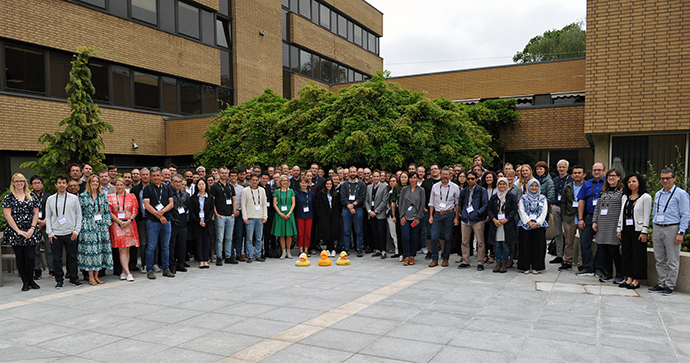A forum for exchanging ideas and experiences on the use of ECMWF data and products
'Using ECMWF’s Forecasts' (UEF2023) provided a platform to discuss the use and performance of ECMWF's forecasts and related products. It was open to all ECMWF forecast users around the world and provided an opportunity to give feedback to ECMWF on forecast performance and on the range of available products, to learn about ECMWF’s recent developments of its forecasting system and to share experiences and network with ECMWF and other users.
UEF2023 was an in-person event and took place at ECMWF's headquarters in Reading, UK. The oral presentations were livestreamed.
2023 theme: Ensemble forecasting
The theme was developed using suggestions from attendees of previous UEF meetings, recent events and hot topics, after discussions with a variety of ECMWF staff and users in Member and Co-operating States and a Twitter poll.
Overview
ECMWF produced its first operational ensemble predictions on 24 November 1992 and started to run a daily ensemble prediction system on 1 May 1994. The first ensemble (ENS) ran at 210 km resolution with 19 levels and 33 members. Over 30 years since the first ensemble run at ECMWF, the Ensemble Prediction System (EPS) now runs twice a day at 18 km with 137 levels and 51 members out to 15 days. The Extended Range ensemble (ENS-extended, introduced in 2004) currently runs twice a week at 36 km with 51 members out to 46 days ahead.
Ensembles are at the heart of ECMWF’s global forecasts at all time ranges, from the ensemble of data analysis to the medium, extended and long (seasonal) forecast ranges. Both the medium-range and the extended-range ENS will undergo substantial changes in the next model cycle upgrade (48r1) in 2023. The ENS resolution will be increased to 9 km while the ENS-extended will run daily with 101 members.
ENS forecasts are used across meteorology, hydrology, air quality, and climate including for extreme event prediction, uncertainty understanding and communication and for re-forecasting. Many ECMWF forecast products are created from ENS data including meteograms, the Extreme Forecast Index (EFI) and Precipitation Type. The EU's Copernicus Atmosphere Monitoring Service (CAMS) run by ECMWF uses global and regional air quality ensembles for atmospheric monitoring. For longer-range forecasting, the ensemble seasonal forecasting system SEAS5 feeds products like the EU's European and Global Flood Awareness Systems (EFAS and GloFAS).
On climate time scales, while ECMWF does not run its own climate EPS, the EU's Copernicus Climate Change Service (C3S) run by ECMWF has products like the seasonal forecast ensemble, with members provided by ECMWF, the Met Office (UK), Météo-France, DWD (Germany), CMCC (Italy), NCEP (USA), JMA (Japan) and ECCC (Canada). Ensembles are also commonly used for the communication of climate scenarios such as the International Panel on Climate Change's (IPCC) emission scenarios.
While many forecast products use ensemble data, the use of ensembles on a daily basis by users is not as high as would be expected, with some users favouring more deterministic approaches. Therefore, UEF2023 also aims to explore the challenges of using ensembles and to better understand why they are not utilised to their full potential.
